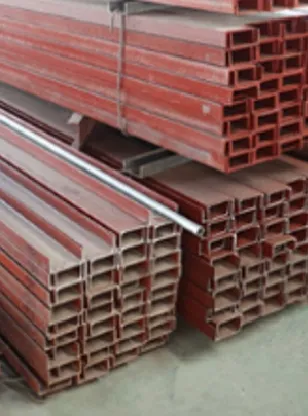loading...
- No. 9, Xingyuan South Street, Dongwaihuan Road, Zaoqiang County, Hengshui, Hebei, China
- admin@zjcomposites.com
- +86 15097380338
- Welcome to visit our website!
Durable and Lightweight FRP Grate Decking Solutions for Various Outdoor Applications
Exploring FRP Grate Decking A Sustainable Solution for Modern Applications
In recent years, the construction and manufacturing industries have been evolving, focusing increasingly on sustainability and efficiency. One such innovation that stands out is Fiber Reinforced Polymer (FRP) grate decking. This advanced material offers a myriad of advantages that make it suitable for various applications, including industrial, commercial, and municipal projects.
FRP is a composite material made from a polymer matrix reinforced with fibers, typically glass or carbon. This combination yields a product that is not only lightweight but also extremely strong, capable of withstanding heavy loads and harsh environmental conditions. FRP grate decking is specifically designed to provide a safe, durable walking surface while allowing for drainage, ventilation, and reduced weight compared to traditional materials like steel or concrete.
Exploring FRP Grate Decking A Sustainable Solution for Modern Applications
Another noteworthy advantage of FRP decking is its superior safety features. The surface of FRP grates can be manufactured with anti-slip textures, providing increased traction even in wet conditions. This is particularly significant in industrial settings where workers need to navigate potentially hazardous surfaces. Furthermore, the lightweight nature of FRP means that installation is typically easier and faster than for heavier alternatives, reducing labor costs and time delays on construction projects.
frp grate decking

Environmental considerations are increasingly integral to any construction decision, and FRP grate decking excels in this area as well. The production of FRP materials often utilizes recycled materials, making it a more sustainable option than traditional composites. Additionally, since FRP is lightweight, it requires less energy to transport, resulting in a reduced carbon footprint throughout the supply chain. The longevity and durability of FRP also contribute to reducing the overall environmental impact, as frequent replacements and repairs are minimized.
Another factor that enhances the appeal of FRP grate decking is its versatility. It can be customized in terms of color, size, and load capacity to fit a wide range of applications—from pedestrian walkways and bridges to platforms and stair treads. The design flexibility allows architects and engineers to incorporate FRP grates into their projects without compromising aesthetic or functional criteria.
Despite its numerous benefits, it’s essential for potential users to consider specific needs when selecting materials. While FRP grate decking offers many advantages, it may not be the best fit for all applications. Evaluating load requirements, environmental conditions, and regulatory standards is crucial in determining whether FRP is the right choice for a particular project.
In conclusion, FRP grate decking represents a significant advancement in construction materials, offering strength, flexibility, and sustainability. Its resistance to corrosion, ease of installation, and safety features make it a compelling option for a variety of applications. As industries continue to innovate and demand more environmentally-friendly solutions, FRP materials are poised to play a vital role in shaping the future of construction and infrastructure, promoting a safer and greener environment for all. Whether you are an architect, engineer, or construction manager, considering FRP grate decking could lead not only to enhanced project outcomes but also to a step toward a more sustainable future.
-
Premium FRP Handrail for All ApplicationsNewsAug.29,2025
-
Low Maintenance FRP Mini Mesh Grating ProductsNewsAug.29,2025
-
Innovative FRP Square Tubes for Modern Industrial SolutionsNewsAug.29,2025
-
FRP Water Storage Tanks Wholesale Solutions for Bulk BuyersNewsAug.29,2025
-
FRP Molded Grating Solutions for Diverse Industrial ApplicationsNewsAug.29,2025
-
Construction Advancements Through FRP Pultruded ProfilesNewsAug.29,2025
-
Why Choose FRP Railings, Guardrails, and Handrail Systems?NewsAug.29,2025
